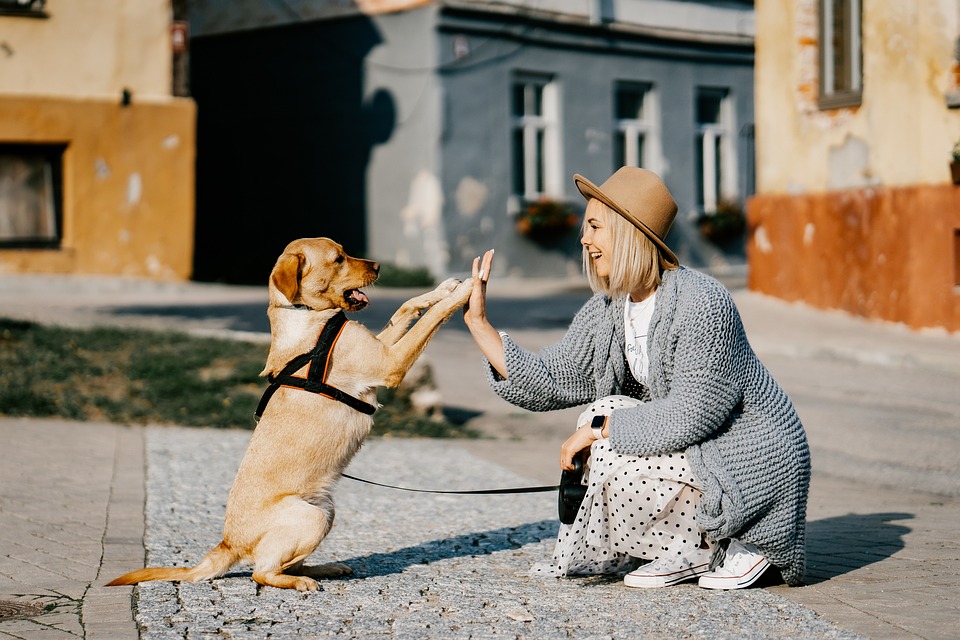Heading: How to Train Your Dog to Walk Politely on a leash
Subheading: Introduction
Walking your dog on a leash is not only essential for their safety but also a great way to establish a strong bond with your furry friend. However, if your dog constantly pulls, lunges, or gets overly excited on walks, it can make the experience stressful for both of you. In this article, we will provide you with effective tips and techniques to train your dog to walk politely on a leash.
Subheading: Understanding the Importance of Leash Training
Leash training is crucial for several reasons. It ensures your dog’s safety by keeping them away from potential dangers, prevents them from running off, and allows you to have control over their behavior. Additionally, teaching your dog to walk politely on a leash helps create a positive walking experience for both of you, making daily walks more enjoyable.
Subheading: Basic Training Techniques
1. Start with Proper Equipment: Invest in a well-fitting harness or collar and a sturdy leash. Avoid using retractable leashes as they can encourage pulling.
2. Positive Reinforcement: Reward-based training is highly effective. Use treats, praise, and affection to reinforce desired behaviors such as walking calmly by your side.
3. Teaching Focus: Before hitting the streets, teach your dog to focus on you. Use a clicker or a verbal cue, such as “watch me,” to get their attention. Reward them when they make eye contact with you.
4. Loose Leash Walking: Train your dog to walk without pulling by using the “stop-and-go” technique. When your dog starts to pull, stop walking and wait for them to loosen the tension on the leash. Proceed only when the leash is loose.
5. Change Directions: To discourage pulling, change your walking direction abruptly whenever your dog starts pulling. This teaches them to pay attention to your movements and reduces the urge to pull.
Subheading: Common Challenges and Solutions
1. Pulling: If your dog pulls on the leash, try using a front-clip harness or a head halter to redirect their attention towards you. Consistency and positive reinforcement will help them understand that pulling is not rewarded.
2. Distractions: Dogs can easily get distracted during walks. If your dog becomes fixated on something, use a high-value treat or a toy to redirect their attention back to you.
3. Reactivity: Some dogs may react aggressively or fearfully towards other dogs or stimuli. In such cases, consult a professional dog trainer or behaviorist who can guide you through proper desensitization and counter-conditioning techniques.
Subheading: Frequently Asked Questions (FAQs)
Q1. How long does it take to train a dog to walk politely on a leash?
A1. The duration varies depending on the dog’s age, temperament, and previous training experiences. Consistency, patience, and positive reinforcement are key. It may take a few weeks to several months to achieve desired results.
Q2. Can I use a choke or prong collar for leash training?
A2. While some trainers may recommend these tools, they can cause discomfort, pain, and potential injury to your dog. Positive reinforcement-based training methods are safer and more humane.
Q3. My dog is too strong to handle. What should I do?
A3. For strong dogs, consider using a front-clip harness or a head halter to gain better control. Professional assistance from a dog trainer is also advisable.
Q4. My dog keeps biting the leash. How can I stop this behavior?
A4. Leash biting can be a sign of frustration or boredom. Offer alternative chew toys or treats to redirect their chewing behavior. Consistently rewarding calm behavior and teaching the “leave it” command can help eliminate leash-biting habits.
Remember, leash training requires time, patience, and consistency. Celebrate small victories and enjoy the process of teaching your furry companion how to walk politely by your side. Happy walking!









